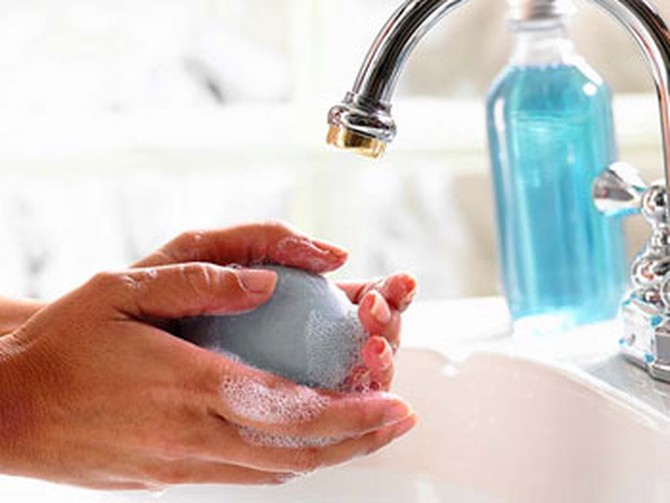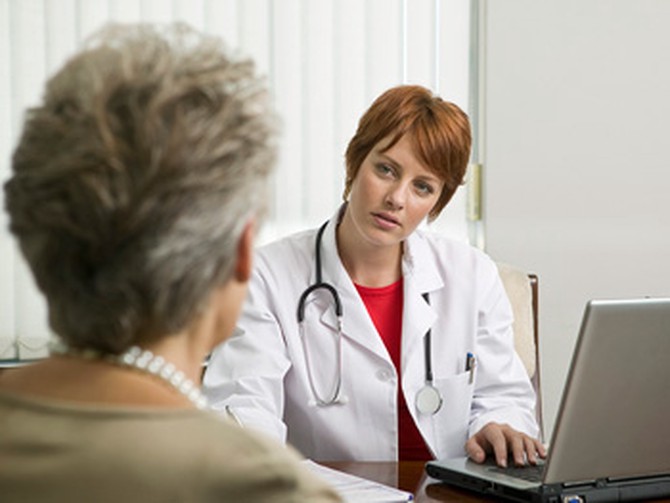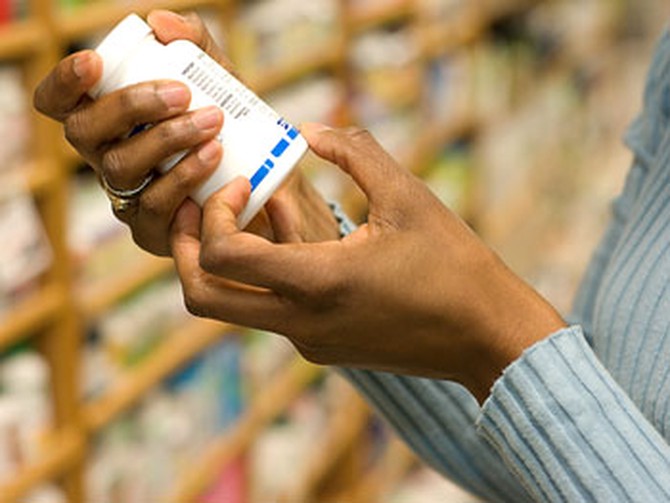Health News from Around the World
These new science and medical research discoveries will change your world.
By Fritz Lenneman

Childhood Germs and Adult Illnesses
Maybe it's time to revise the "five-second rule" into the "10-second rule."
Using data from a long-running study of children living in the Philippines, researchers at Northwestern University have found that children who live in germ-free environments are at increased risk of developing high rates of inflammation as adults—which can lead to illnesses such as heart disease.
The Filipino children studied were more likely to be exposed to domesticated animals and contract infectious diseases than American children. But as adults, the Filipinos studied had levels of C-reactive protein—a measure of inflammation—nearly 80 percent lower than American adults.
Thomas McDade, lead author of the study, told Agence France-Presse news service that exposure to microbes and bacteria early in life could actually help a human develop a stronger immune system in adulthood. "There's rapid brain growth early in life and there are lots of neurological connections being formed, and you need to engage with your environment in order to promote those connections," he said. "The immune system also needs engagement with its environment to drive its development, and without that environmental input, we're depriving it of a necessary source of information that it needs to promote its development."
Using data from a long-running study of children living in the Philippines, researchers at Northwestern University have found that children who live in germ-free environments are at increased risk of developing high rates of inflammation as adults—which can lead to illnesses such as heart disease.
The Filipino children studied were more likely to be exposed to domesticated animals and contract infectious diseases than American children. But as adults, the Filipinos studied had levels of C-reactive protein—a measure of inflammation—nearly 80 percent lower than American adults.
Thomas McDade, lead author of the study, told Agence France-Presse news service that exposure to microbes and bacteria early in life could actually help a human develop a stronger immune system in adulthood. "There's rapid brain growth early in life and there are lots of neurological connections being formed, and you need to engage with your environment in order to promote those connections," he said. "The immune system also needs engagement with its environment to drive its development, and without that environmental input, we're depriving it of a necessary source of information that it needs to promote its development."

50 Million Americans Have Gotten H1N1
According to new estimates released by the Centers for Disease Control and Prevention (CDC), one in six Americans have contracted H1N1, or swine flu. That's more than twice as many infected in the last estimate—22 million as of mid-October 2009.
The report states that the large jump is due to a second peak of illnesses that occurred just after the last publicized estimate.
The H1N1 flu has been confirmed as the cause of death in about 10,000 patients—more than three-quarters of whom were between 18 and 65—and had resulted in 200,000 hospitalizations.
While seasonal flu kills an estimated 36,000 Americans each year, that number includes elderly patients who die from complications that the flu worsens—heart problems, pneumonia and strokes. The H1N1 death toll of 10,000 is considered conservative because it does not include those who died from these types of secondary illness.
While 50 million Americans have had H1N1, that leaves 250 million who have not. If you have not gotten an H1N1 vaccination, the CDC recommends doing so.
The report states that the large jump is due to a second peak of illnesses that occurred just after the last publicized estimate.
The H1N1 flu has been confirmed as the cause of death in about 10,000 patients—more than three-quarters of whom were between 18 and 65—and had resulted in 200,000 hospitalizations.
While seasonal flu kills an estimated 36,000 Americans each year, that number includes elderly patients who die from complications that the flu worsens—heart problems, pneumonia and strokes. The H1N1 death toll of 10,000 is considered conservative because it does not include those who died from these types of secondary illness.
While 50 million Americans have had H1N1, that leaves 250 million who have not. If you have not gotten an H1N1 vaccination, the CDC recommends doing so.

Do Mammograms Increase Breast Cancer Risk?
A new study from the Netherlands suggest that the radiation from regular mammograms actually can increase the risk in young women who already have a high risk of breast cancer.
This finding comes just weeks after the U.S. Preventive Services Task Force released a controversial recommendation to push back the start of regular mammogram screenings in healthy women without family medical history to 50.
This new study relied on no new data. Instead, the Dutch researchers analyzed data from six previous studies of 5,000 high-risk women. They found that in the group of high-risk women with a median age of 45, those who had five or more mammograms or chest X-rays were 2.5 times more likely to develop breast cancer.
Advocacy groups like Susan G. Komen for the Cure and the American Cancer Society vociferously challenged the U.S. Preventive Services Task Force's recommendation, and they question this new study's findings as well. "It's not as if clinicians are unaware and unconcerned about radiation risks in young women," Dr. Robert Smith, the American Cancer Society's director of cancer screening, told The New York Times. "If mammography offered no advantage, they wouldn't do it."
This finding comes just weeks after the U.S. Preventive Services Task Force released a controversial recommendation to push back the start of regular mammogram screenings in healthy women without family medical history to 50.
This new study relied on no new data. Instead, the Dutch researchers analyzed data from six previous studies of 5,000 high-risk women. They found that in the group of high-risk women with a median age of 45, those who had five or more mammograms or chest X-rays were 2.5 times more likely to develop breast cancer.
Advocacy groups like Susan G. Komen for the Cure and the American Cancer Society vociferously challenged the U.S. Preventive Services Task Force's recommendation, and they question this new study's findings as well. "It's not as if clinicians are unaware and unconcerned about radiation risks in young women," Dr. Robert Smith, the American Cancer Society's director of cancer screening, told The New York Times. "If mammography offered no advantage, they wouldn't do it."

Pregnancy and Folic Acid
American women have been taking folic acid for years—in an effort to reduce the risk of birth defects like spina bifida in children. Now, there's new evidence that folic acid supplements can prevent heart defects in children.
While folic acid supplements have been a standard recommended part of prenatal care in the United States for years, on the practice hasn't caught on in every country. In one of those countries, the Netherlands, researchers found that among women who had already given birth to a baby with a heart defect, those who then took a 400-milligram supplement of folic acid were 20 percent less likely to have another child with a heart defect—and their risk was 26 percent lower than the general population. For some specific heart defects, the risk was 40 percent lower than the general population.
While folic acid supplements have been a standard recommended part of prenatal care in the United States for years, on the practice hasn't caught on in every country. In one of those countries, the Netherlands, researchers found that among women who had already given birth to a baby with a heart defect, those who then took a 400-milligram supplement of folic acid were 20 percent less likely to have another child with a heart defect—and their risk was 26 percent lower than the general population. For some specific heart defects, the risk was 40 percent lower than the general population.

Fighting SAD
Is there a more aptly named condition than SAD, or Season Affective Disorder? When winter's short days limit daylight and frigid temperatures trap you indoors, who doesn't feel sad?
SAD, however, is different than the "winter blahs." Women's health expert and frequent guest of The Oprah Show Dr. Christian Northrup calls SAD "the PMS of the annual calendar."
"What it is, is you're not getting enough serotonin. So the reason you're getting depressed is absolutely real," she says.
A recent article in The Wall Street Journal highlight some of the curious facts about SAD—it peaks in January and February despite the fact that days are actually getting longer; it strikes those 18 to 30 most; it is three times more likely in women than men—and some of the latest therapies.
Some of these therapies include:
SAD, however, is different than the "winter blahs." Women's health expert and frequent guest of The Oprah Show Dr. Christian Northrup calls SAD "the PMS of the annual calendar."
"What it is, is you're not getting enough serotonin. So the reason you're getting depressed is absolutely real," she says.
A recent article in The Wall Street Journal highlight some of the curious facts about SAD—it peaks in January and February despite the fact that days are actually getting longer; it strikes those 18 to 30 most; it is three times more likely in women than men—and some of the latest therapies.
Some of these therapies include:
- Vitamin D
This is one of /article/health/wellnessandprevention/20091102-orig-seasonal-health-winter/2 Dr. Oz's favorite vitamins. During the summer months, most Americans get plenty of vitamin D from the sun. However, in winter, anyone living north of Los Angeles or Atlanta is likely to be deficient—which is very bad news because vitamin D helps build strong bones and fight diseases like cancer and heart disease. Dr. Oz recommends adding D-rich foods to your diet and taking a supplement of between 1,000 and 2,000 units a day. - Light Therapy
Promising to relieve 80 percent of SAD symptoms, this involves sitting before a stronger-than-sunlight lamp for 15 to 20 minute a day. This is supposed to reset the body's rhythms. - Dawn Simulation
Some new alarm clocks offer a feature in which they bathe the bedroom in a bright light similar to that used in light therapy. - Negative Air Ions
By emitting air with extra oxygen molecules attached, ion generators are supposed to increase the amount of oxygen in the blood—which is believed to improve mood. - Outdoor Exercise
Even when the weather outside is frightful, The Wall Street Journal quotes Janis Anderson, director of Seasonal Affective Disorders services at Brigham and Women's Hospital in Boston, as saying getting outside can be a huge help with SAD. "I've had people who have SAD problems and have chosen to walk to work in the morning rather than take the car, and that's been a great treatment."
Published 12/15/2009
As a reminder, always consult your doctor for medical advice and treatment before starting any program.

